|
In September 2015, 192 countries signed on to the 2030 Sustainable Development Goals (SDGs) with 17 Goals and 169 targets. The UN General Assembly 2019 endorsed the Political Declaration adopted by the Sustainable Development Goals Summit, held at its Headquarters in September. The Summit committed Member States to taking a myriad of actions to implement the 2030 Agenda, ranging from mobilizing adequate and well‑directed financing to investing in data and statistics for the Sustainable Development Goals. This spread of actions was fully ventilated at the UN Economic and Social Council (ECOSOC) High-Level Political Forum (HLPF) in July 2019 under the theme "Empowering People and Ensuring Inclusiveness and Equality". Not only did It demonstrate the central role of SDG #10 “reduce inequality within and among countries" but also the pervasive 'inclusiveness and equality' across the 17 SDGs. See: https://sdg.iisd.org › news › global-goals-website-creates-target-level-icons
This week we outline the global principles and some applications of the SDGs. It is our intention to follow up in future blogs with examining the challenges and prospects for developing countries and regions, achieving inclusiveness and equality. The background document prepared for the ECOSOC HLPF illustrated that (10) targets within SDG #10 cast a wide net to capture multiple drivers of inequality and to ensure that no group or individual is left behind. Four targets address inequality within countries across social, economic and political dimensions that aim to expand prosperity, inclusion, and social protection. Three targets aim to reduce inequality among countries with attention to cross-border flows of finance and people. Three other targets focus on the means of implementation and put forward concrete steps for attaining greater equality by directing resource flows toward those most in need. High-level Political Forum on Sustainable Development (HLPF) 2019 Convened by ECOSOC In addition, 60 targets across the SDGs – not including those in SDG #10 – are directly linked to reducing inequality. Equal or universal access for all to resources, services and opportunities is a recurring theme across the SDGs. For example, SDG #2 that aims at eliminating hunger calls for access to food, land and productive resources; SDG #3 on good health and well-being calls for universal access to reproductive health-care services and universal healthcare; and SDG #4 calls for equal access to quality pre-primary through tertiary education and other learning programmes. SDG #8 on decent work and economic growth directly addresses inequality by calling for stronger growth rates in least developed countries, increasing micro, small and medium enterprises, promoting migrant workers’ rights or calling for more government spending in social protection. The list also includes access to energy, infrastructure and transport. Above all achieving equality-oriented targets in other SDG Goals promises to directly affect progress toward the targets in SDG #10. Since the adoption of the 2030 Agenda in 2015, the UN reports positive movement as measured by SDG #10 targets. In 64 per cent of the countries with data, the incomes of the poorest 40 per cent of the population grew faster than the national average. The global average cost of sending remittances has declined in recent years although rates are still more than double SDG targets. And tariffs faced by small island developing States and least developed countries have been falling. This progress has been mixed across countries and regions. Some groups including those in rural areas (e.g. family farmers), women, young people, people with disabilities, indigenous peoples and others have persistently clustered at the bottom of distributions. Real wage growth has constantly declined since 2015 and at the same time, a warming climate, demographic change, decent work deficits, political crises, technological change and conflict risk exacerbating inequalities. In these circumstances actions are toward equality in both opportunities and outcomes are necessary. Inequalities can become self-perpetuating across generations, thus hindering progress towards one of the central objectives of the 2030 Agenda – that of ‘leaving no one behind’. There is another important gap in between establishing indicators and informing inclusive policies. It revolves around tracking progress on discriminatory practices and income deprivations at the global, regional and national levels is limited. A set of issues from the UN SDG Summit that can exacerbate such tendencies include rapidly changing technologies; climate related shocks, disasters and crises; the globalization of information, business, and social networks; the decreasing bargaining power of workers; conflicts and many other trends. "But they can also open up space for new alignments and forward-looking cooperation within and among countries. At the same time, not all groups will be equally affected by these trends, with those who are already marginalized having limited resources to withstand shocks and to capitalize on emerging opportunities, which could further deepen inequalities". SDG Summit These are global trends. They indicate some of the major indicators that should engage the attention of countries nationally, sub-regionally and regionally. Listed here are some of the recurring suggestions from several sources some of which will be further explored in future blogs: Human Capital Development
Growth and Development
Planning and Financing Development
Public Policy and Partnerships
Conclusion Contending ideas among of policy makers , experts and practitioners sharing experiences around the world, and at the more recent symposia at the UN, the IMF and the World Bank, indicate that multilateralism and international cooperation are essential to overcoming the challenges facing SDG implementation. Strengthened fiscal capacity, improved tax systems, reoriented expenditure on projects with bigger development impact and combined tax incentives with bigger returns to countries, are all priorities. The clincher for me that aptly describes the challenges to inclusiveness and equality is represented in a statement by Amanda Khozi Mukwashi, CEO, Christian AID. At the CSO session "SDGs: Making it Happen" at the IMF -World Bank Annual meetings (2019) she said: “Many mothers need to make decisions on whether to spend the money they have on a sick child who is about to die or on the food for children that are starving and hungry”. Eddie Greene
2 Comments
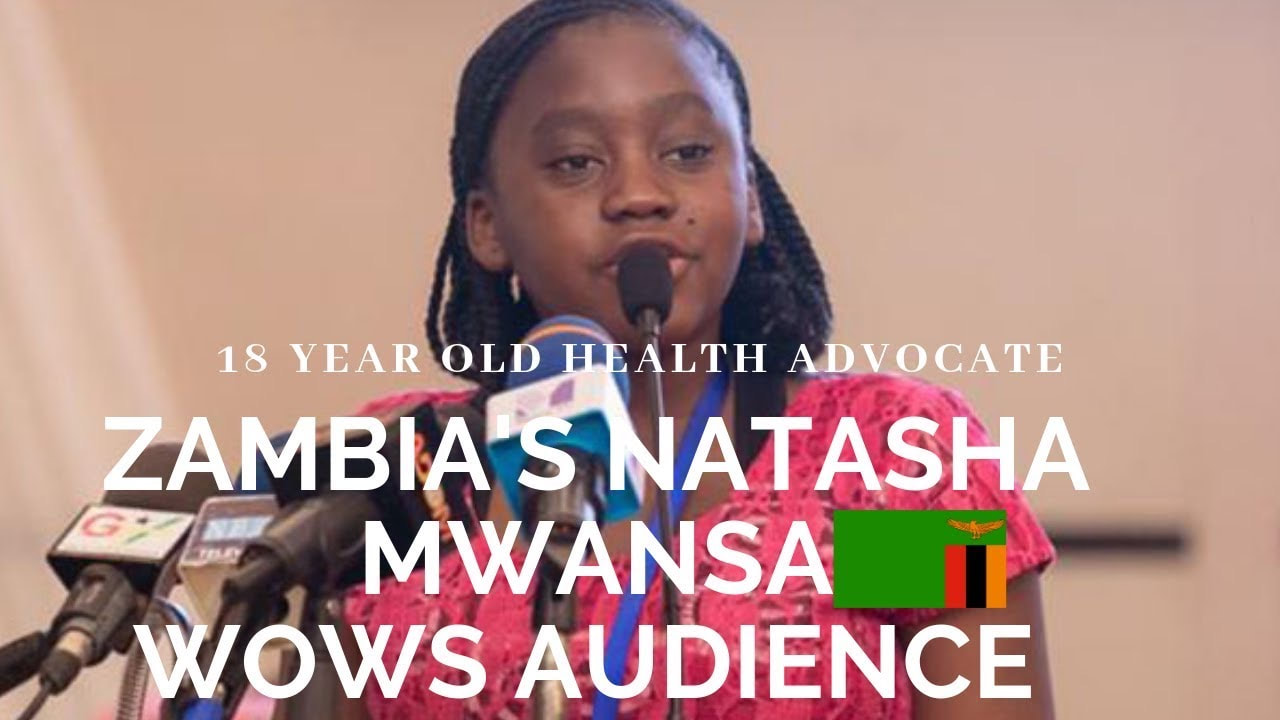 While awaiting the Report from the Caribbean Congress for Adolescent and Youth Health (CCAYH) which was the focus of the GOFAD blog last week (18-09-19), it is important to note that two events involving youth in Washington DC are worth highlighting. The first at the IMF-World Bank Annual meetings (October 14-19 ), involved Generation Z (born 1997-2012) The other focused on Millennials sponsored by Brookings Institution and the Millennial Action Program (22-09-19). The issues that formed the basis of discussions at these events are worth considering by Caribbean Youth in their quest for rebranding and transforming youth leadership. “How Millennials think differently about Climate Change and Debt?” was the theme of the Brookings Institution event. It struck a chord especially since the debt issue, so important to the Caribbean, has hardly been mentioned in the conversations of Caribbean Youth Leaders. As in the case of Climate Change, unless urgent corrective action is taken, debt is likely to be a major burden to Millennials, GenZ and future generations. At the end of 2018 debt is above 60 percent of GDP in 12 Caribbean Countries. ( CBD annual report, 2018). The National Debt and Future Prospects: Playing with Fire At Brookings, based on extensive surveys, the National Debt in the US was deemed to be significant even though it did not rise to same level of urgency as climate change. Millennials associated the consequence of debt accumulation which is now US$23 Trillion as integrally linked to rising cost of education and high levels of student loan debt, as well as the sustainability of social security. These issues will tend to affect their economic prospects due among other things, to high debt service of student loans with effects on their standards of living. Recognition was given to the fact that the Generation X, preceding Millennials, experienced the Great Depression but were better able to cope with navigating difficult times. This was due to the nature of the economic recovery and the role of the state. Now, the national debt combined with inflation, slow growth, the rising cost of housing, unemployment and underemployment are compounding factors with adverse effects on readiness for retirement. And even more so in the opinion of one of the panelists “more of the pay checks of Millennials are going to service the growing national debt while the prospects of living a life of dignity in old age are being threatened”. Despite these ominous trends, the public policy debate on debt does not get the traction that Climate Change does. For Millennials, the challenge is getting individuals engaged in issues for which the impact is many years in the future. For governments, the enormous debt is too big to tax their way out of it. One of the major lessons to be drawn from the dialogue at Brookings is the need to make fiscal matters real by illustrating the personal consequences and engaging in financial literacy. It requires transparency in establishing the causes and effects and 'teeing up' the fiscal debate in the public sentiment to drive public policy. The Millennium Action Project (MAP) provides a useful model for taking action based on research and tracking public opinion. https://www.millennialaction.org Climate Crisis evokes a sense of urgency: Framing the Future is Essential A Brookings Survey (2019), done as part of the Millennial Action Program (MAP) demonstrated that Millennials recognize that they are at the point of no return “as the first generation to see the effects of Climate Change and the last with a chance to do something about it”. Aware that Climate Change Science is saying “act now to protect the health of future generations”, MAP has developed a module which illustrates the options for framing Climate Action by efficacy i.e. investing in solving problems urgently. This includes recognizing the urgency in taking action with either (a) low efficacy that leads to negative outcomes and (b) high efficacy that leads to optimal outcomes. The IMF-World Bank session (October 15), IMF inspired Generation Z: Finding its Voice was informative. It focused on a series of issues including adolescent health, rights to health, physical and mental and child marriage referred to by one of the speakers as "pedophilia". On climate change they blame Millennials for the poor state of the environment which they have left them. GenZ is much more diverse than Millennials based on race and ethnicity. They are less religiously affiliated. Malala Yousafzai, Co-Founder of the Malala Fund, and Aya Mouallem, Women Deliver Young Leader, advocate, for bringing knowledge and passion and are eager to see social change now. They admit to a challenge to get decision-makers to take them seriously and to directly engage young people in the policies and programs that affect their lives. They have messages to world leaders on the power of meaningful youth engagement. They have examples and anecdotes that demonstrate this power. Significant is the charge by Malala Yousafzai: “First, to young people: you don’t need to wait for someone in power to give you permission or even listen to you to be an activist. You can begin by educating yourself on issues, educating others and organizing in your community. Get some momentum and try to make advocates out of everyone you meet. As for political leaders, I would say that they should have noticed by now that this generation is ready to speak out, write, lead, march, vote on issues important to them. You can ignore us once or twice, but we’ll keep coming back. And when you are gone we’ll knock on the door of whoever comes next.” Some Takeaways for Transformative Leaders
The voice for rebranding and transforming youth leadership that resonates beyond the Halls of the IMF and the World Bank is that of 18 year old Natasha Mwansa from Zambia. Her pedigree and the relevance of her message are fully illustrated in the video clip https://www.youtube.com/watch?v=4xYh9Rk-P48 Eddie Greene 10/17/2019 The Caribbean Congress on Adolescent and Youth Health: Rebranding Youth LeadershipRead NowThis blog is being written as the first Caribbean Congress on Adolescent and Youth Health (CCAYH) in Port-of-Spain, Trinidad and Tobago on 15 – 17 October 2019 is in session. The theme of the Congress is "Championing our wealth: promoting the health and well-being of adolescents and youth in the Caribbean." has according to the report attracted the participation of approximately 200 youth.
Ms. Terez Lord, CARICOM Youth Ambassador provided a fundamental challenge to the Congress in her remarks at the opening session as follows: It is indeed a distinct honour to stand before you as CARICOM Youth Ambassador of Trinidad and Tobago on this incredible occasion to deliver these words—out of my mouth but pouring out of the hearts of young people- youths and adolescents of the entire region. Today we witness and we contribute towards history which is more than the path left by the past. It influences the present and it can shape the future. Today, history is being made as we inaugurate the first ever Caribbean Congress on Adolescent and Youth Health. This congress is a safe space, rich in dialogue, where international partners and practitioners can highlight and address issues/challenges circumventing good health and wellbeing of a major subset of the population and a critical human resource: the youth and adolescents. Not forgetting adolescents and youths with disabilities. It is a catalyst for policy makers to discuss how to improve as well as how to sustain investment in our health in a manner that is deliberate, impactful, measurable and sustainable. This Congress, the first of its kind is for youth, by youth, with youth and supported by many agencies. It is bolstered by the momentum of or time. It is action- oriented and should have decisive follow up. This is not a talk-shop. We must set the basis for no less. Health and well-being is far and wide in reach and impact and must be met with ambitious, future-oriented, systemic regional responses. When I think of regional responses, I think of the Caribbean Community— CARICOM. Collaboration. Camaraderie. Cohesion. Caribbean Integration. It makes meaningful and manifest the dream and ideology, or as my sister would say- the epiphany that birthed CARICOM when it was established in 1973 by the Treaty of Chaguaramus in Trinidad and Tobago .Today, this audacious, integrative move as integral to the sustainability development of our Region is so that future generations would have benefitted from what we as young leaders would have advocated for and for what we agitate. The young people are here in this room and beyond connected by the technology that allows us to web stream. They are present and ready. They are ignited by passion and purpose. We are ready to contribute to the conversations that impact our lives and that of generations to follow. This landmark Congress is being held under the patronage of Mrs. Sharon Rowley, wife of the Prime Minister of Trinidad and Tobago with the support of several partners including PAHO, UNFPA, PANCAP and the Spouses of Caribbean Leaders Action Network (SCLAN) We therefore await the outcomes of the Congress identified as “regional commitments", a "vision and core principles" to address the health needs of adolescents and youth, empowering champions and developing "action plans" based on current and emerging priorities. This event promises to lead to a rebranding of Youth affairs in the Caribbean, a phrase is actually borrowed from the vision of the Hon Deyalsingh that Trinidad and Tobago is rebranding its approach to mental health. Rebranding here is applied to the broader range of issues at the CCAYH and should be closely aligned to recent international events especially that occurred during the UN General Assembly (UNGA) in September. To set the context for a follow up reflections next week, I have provided a sample of programmes and policies at the global level , referred to by many of the speakers at the opening ceremony. These provide useful lessons. Some Lessons to be Learned from Recent International Engagements The four illustrations are by no means exhaustive but provide some useful signposts for action. 1. UNGA 's first Summit on the Sustainable Development Goals (SDGs) since they were adopted in 2016 . The political declaration, entitled, “Gearing up for a decade of action and delivery for sustainable development,” proclaimed: “We stand firm in our determination to implement the 2030 Agenda as a plan of action for people, planet, prosperity, peace, and partnership – a plan to free humanity from the tyranny of poverty and heal and secure our planet for future generations.” Many of the speakers especially H.E Paula-Mae Weekes the President and the Hon Terrence Deyalsingh, underscored the importance of SGD# 3 on Health and wellness referring in particular to the need for the Congress to address NCDs, Mental Health, suicide among young people and violence against women and girls. 2. UN General Assembly Political Declaration themed “Universal Health Coverage: Moving Together to Build a Healthier World” This was highlighted in the address by Dr. Carissa Etienne, PAHO Director who highlighted its aims as striving toward significant achievements over the next decade by (a) tackling communicable diseases, including HIV/AIDS, tuberculosis and malaria, while addressing non-communicable disease and the growing threat of antimicrobial resistance through robust and resilient primary healthcare systems; (b) ensuring universal access to sexual and reproductive health-care services and reproductive rights; (c) protecting the wellbeing and dignity of women and girls; (d) changing the financing paradigm by stepping up the pace of investment towards UHC; and (e) the importance of bold leadership. 3. HIV, Health, and Wellness: The Lancet HIV published a first of its kind review and meta-analysis that found that HIV continues to disproportionately affect gay, bisexual, and other men who have sex with men throughout Africa. The authors evaluated 75 independent studies conducted across 28 countries. They found that HIV awareness, ART coverage, and viral suppression remain too low to reach UNAIDS 90-90-90 targets by 2020. Additionally, levels of testing were significantly lower in countries with severe anti-LGBT legislation compared to other countries. 3. Global Strategy for Women’s, Children’s and Adolescents’ Health https://www.who.int/life-course/partners/global-strategy/en. Foremost among the leadership of this strategy is UNFPA whose Regional Director, Ms. Alyson Drayton amplified how sexual and reproductive health and rights are highlighted in the global programme of the organization. The Chair of SCLAN , Mrs. Kim Simplis Barrow also underscored the emphasis that CARICOM First Ladies place on these issues and in particular on engaging men and boys in reducing violence against women and girls. 4. The Lancet journal published HIV, Health, and Wellness is a first of its kind review and meta-analysis that found that HIV continues to disproportionately affect gay, bisexual, and other men who have sex with men throughout Africa. This general conclusion may equally apply to the Caribbean as a whole. The authors evaluated 75 independent studies conducted across 28 countries. They found that HIV awareness, ART coverage, and viral suppression remain too low to reach UNAIDS 90-90-90 targets by 2020. Additionally, levels of testing were significantly lower in countries with severe anti-LGBT legislation Making Rebranding a Reality: The Health and Youth of the Region are the Wealth of the Region While this is intended theme of the follow up blog next week, It is significant that this conclusion is influenced by an event at the Annual IMF- World Bank Meeting in Washington yesterday (October 15) IMF inspired Generation Z: Finding its Voice . The leading voice at that session was Natasha Wang Mwansa an 18 year old dynamo from Zambia. Her pedigree is fully illustrated in a video clip under the issues and videos section on the GOFAD website. It stimulated me to reflect on the aspirational goal advocated by Ambassador Irwin Larocque who gave the keynote address at CCAYH. He called for amending the 2000 Nassau Declaration of CARICOM Heads of Government from "the Health of the Region is the Wealth of the Region" to that of "the Health and Youth of the Region are the Wealth of the Region". I could not help thinking about a fitting way to mark the 10th anniversary of the presentation to CARICOM Heads of Government in Suriname in January 2010, the seminal Report of The CARICOM Commission of Youth Development , The Eye on the Future: Investing in Youth Now for Tomorrows Community. The Commission was co-chaired by Hon Yldiz Pollock Beighle , now Foreign Minister Suriname, and a former CARICOM Youth Ambassador with the late Professor Barry Chevannes. I therefore pose the questions: How about making this 10th anniversary celebration in January/February 2020 an exercise in visioning the rebranding of Youth leadership at the CARICOM (perhaps at CARICOM's intercessional meeting of Heads of Government)? . How about aligning its mission around the theme : The Health and Youth of the Region are the Wealth of the Region. Eddie Greene 10/10/2019 Formulating a Pan Caribbean Partnership for Climate Action: An exercise in Functional Cooperation - Why Not ?Read Now“The Caribbean experience makes abundantly clear that we must urgently reduce global emissions and work collectively to ensure that global temperature rise does not go beyond 1.5 degrees above pre-industrial levels ... cut greenhouse emissions by 45 per cent by 2030 and get to carbon neutrality by 2050.” [Antonio Gutteres UN Secretary General at the 40th Regular meeting of CARICOM Heads of Government in St Lucia July 2019]
Setting the Scene The UN Secretary General's message became even more potent in the aftermath of Hurricane Dorian that literally devastated Abaco and Grand Bahama Islands in The Bahamas. It was reinforced at the UN Climate Action Summit with its refrain that Climate Change poses an existential threat to many Small Island Developing States and Least Developed Countries and undermines sustainable development prospects for most. However, nowhere were these issues more dramatically illustrated as in the presentation to the UN Summit by Prime Minister Mia Mottley on behalf of the Alliance of Small Island States (AOSIS). This presentation carried in last week's blog post, highlighted the need to:
Making the Case for a Pan Caribbean Partnership These takeaways apply as much to advocacy for the AOSIS objectives within the global arena as to a Pan Caribbean Partnership for Climate Action. Previous instalments preceding this blog show that: the building blocks for a Pan Caribbean Partnership are already in place; Caribbean countries are among the most climate-vulnerable countries; their climate scientists led by researchers at UWI are in the forefront of developing science-based strategies for climate adaptation and mitigation through their participation in the IPCCC processes; they lack access to climate finance; and their interests are not fully represented at the international level. Hence, involvement in global cross cutting-multifaceted initiatives such as climate impacts research can strengthen the connections between the scientific assessments of climate change, vulnerability and adaptation, enable access to finance and help implement concrete projects. The Vision and Mission The Blog Innovation and Climate Resilience (9-19-19) established the building blocks for a Climate Action Partnership. It identified leading actors, institutions and priorities. It highlighted the vision and mission of the Partnership as defined by the Three (3) Ones Principle, One Regional Plan, One Coordinating Unit and One M&E implementation instrument. This principle provides the guidelines of a plan proposed by the Caribbean Community Climate Change Centre (5Cs) and endorsed by the CARICOM Heads of Government. See Delivering transformational change 2011-21: Implementing the CARICOM `Regional Framework for Achieving Development Resilient to Climate Change` Using the Regional Framework as a backdrop, we are proposing an outline for consideration. It hinges on four (4) pillars: (i) Knowledge for Climate Action; (ii) Clusters for Climate Resilience; (iii) Institutional Strengthening for Climate Adaptation and Mitigation; (iv) and Sustainable Financing for Climate Change Knowledge for Climate Action This pillar comprises four (4) components:
Clusters for building Climate Resilience This is intended to pursue the aspirational goal of making the Caribbean the first Climate resilient region in the World. It involves developing regional and interregional partnerships to facilitate:
Institutional Strengthening for Climate Change Responses This requires establishing clusters for climate action to foster the multidisplinary and multisectoral whole of government approaches with designated focal points:
Sustainable Financing for Climate Change This should be based on the development of a Regional Climate Action Plan. Access to finance remains one of the most important barriers to climate action. Going forward, financial instruments and innovative financing mechanisms must be leveraged to mobilize adequate climate finance. An enabling environment for private sector engagement and public-private collaborations must also be further enhanced to ensure the required pace and scale of Nationally Determined Conditions (NDC) for climate action. These require strong advocacy, political will and global solidarity:
Conclusion These are preliminary thoughts on the movement toward a Pan Caribbean Partnership for Climate Action. Is it necessary? Is it cost effective? Is there the climate leadership for this approach ? -- Why Not? 10/3/2019 Barbados Prime Minister, The Honorable Mia Mottley Advocates on Behalf of the Alliance of Small Island States (AOSIS) at the UN Climate Action SummitRead Now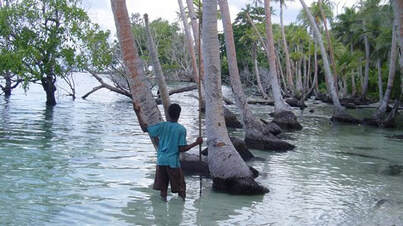 Three (3) consecutive weeks of discussion via the GOFAD Blogs followed the Devastation in The Bahamas by Hurricane Dorian. They triggered perspectives on achieving climate resilience through innovative approaches, regional partnerships and global solidarity. It has been suggested that for the Caribbean, building blocks are in place through strategic plans and programmes led by CARICOM institutions like Caribbean Community Climate Change Centre (5cs), the Caribbean Disaster Emergency Management Agency (CDEMA) and the University of the West Indies (UWI). There are illustrations too, of the leadership roles of the Caribbean in shaping global policy such as the Paris Agreement (2016) and most recently, the Report of the Global Commission on Adaptation (September 2019). This week , we present, especially for those who have not seen/heard it, Barbados Prime Minister The Hon Mia Mottley's constructively passionate advocacy on behalf of the 44 member Alliance of Small Island Development States (AOSIS) at the UN Climate Action Summit. Prime Minister Mottley was emphatic about the important voice of the AOSIS which comprises 20 percent of the membership of the UN. The question is: does the case presented for AOSIS override the proposal for a Pan Caribbean Climate Action Partnership? Your ideas are appreciated. United Nations Secretary-General’s Climate Action Summit - Prime Minister Mia Mottley's Remarks https://youtu.be/Y0aUaXWGnsg via @YouTube Eddie Greene |
Details
AuthorEdward and Auriol Greene Directors, GOFAD. Archives
April 2022
Categories |
Global Frontier Site Links |
Contact InformationEmail: [email protected]
Twitter: @GofadGlobal |

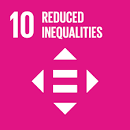
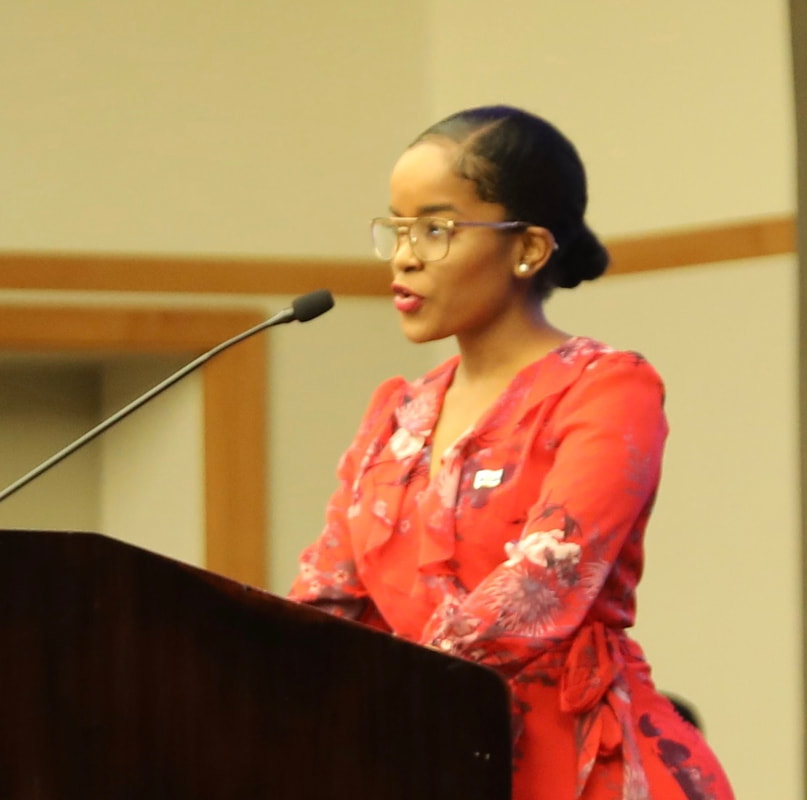
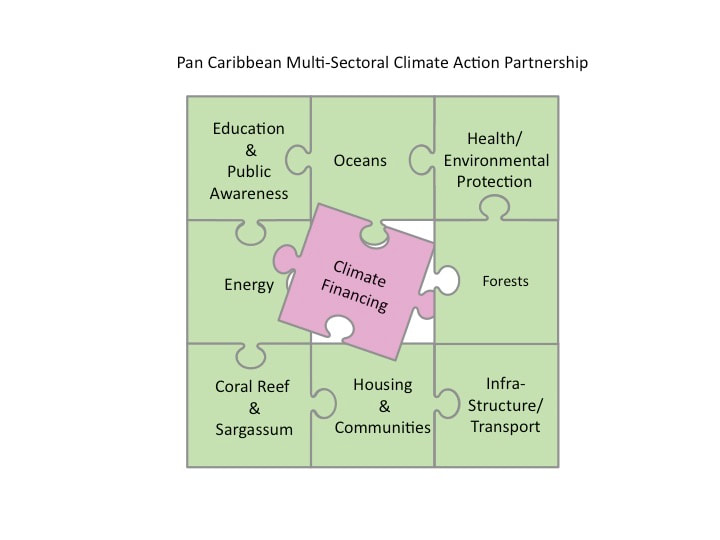
 RSS Feed
RSS Feed
